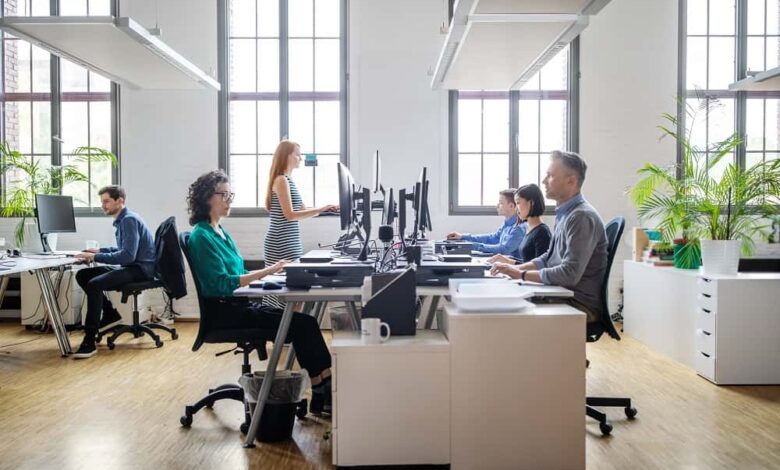Maximising Space: Key Considerations for Large Office Fit-Outs

Office environments foster employee collaboration, creativity, and productivity. Therefore, large office fit-out projects in the office workspace are becoming more popular as businesses look to maximise workspace for increased productivity and worker happiness. These projects entail more than just moving furniture about; they take a holistic approach to design, practicality, and aesthetics. You will now examine the important factors that can greatly impact spacious workplace design.
Space Assessment and Planning
Large office fit-out projects begin with a thorough space assessment. This involves understanding the current layout, identifying inefficiencies, and recognising opportunities for improvement. The goal is to optimise space utilisation while accommodating the organisation’s needs.
Flexibility and Adaptability
Being adaptable is essential when working in a corporate setting. Adaptable layouts and furniture configurations that can handle changing work patterns should be prioritised in designing a large workspace. Flexible workstations, adjustable walls, and modular furniture allow for easy space reconfiguration when needs alter. In addition to increasing productivity, this adaptability creates a flexible and adaptable work environment that meets the ever-changing needs of the contemporary business world..
Efficient Space Allocation
Efficient space allocation is crucial. The workplace should balance collaborative areas and private workspaces, ensuring both are optimised for productivity. Open-plan layouts can foster teamwork, while private workspaces or quiet zones provide essential concentration spaces.
Technology Integration
Incorporating modern technology is a must in spacious workplace design. Technology, from wireless connectivity to integrated AV systems, is pivotal in today’s workplaces. Ensuring that technology is seamlessly integrated into the design enhances functionality and supports the organisation’s digital initiatives.
Sustainable Design
Sustainability is a growing concern for businesses. Implementing eco-friendly design elements, such as energy-efficient lighting, sustainable materials, and waste reduction strategies, aligns with corporate social responsibility and contributes to a healthier and more cost-effective workspace.
Employee Well-being
Employee well-being is a top priority in full-scale workplace interiors. The design should consider natural light, ergonomic furniture, noise control, and access to green spaces. Employee morale and productivity can be increased by fostering an atmosphere that supports both physical and mental wellness.
Brand Representation
The workplace should reflect the organisation’s brand identity. Incorporating the company’s colours, logo, and values into the design can reinforce brand recognition and strengthen the connection between employees and the organisation.
Budget Management
Large workplace fit-outs represent substantial investments, making effective budget management even more crucial. To safeguard the project’s financial health, engaging in meticulous cost estimation, implementing value engineering strategies, and maintaining vigilant financial oversight throughout the entire project lifecycle is imperative.
Compliance and Regulations
Adhering to local building codes and regulations is necessary when undertaking large office fit-outs. These regulations encompass many essential aspects, including accessibility standards to ensure inclusivity, adherence to fire safety codes for the well-being of occupants, and zoning regulations that dictate land use and spatial organisation. Failing to comply with these legal requirements poses the risk of costly delays and exposes the project to potential legal issues, which can result in financial penalties and reputational damage.
Project Management and Timelines
Workplace fit-outs are intricate, and their successful execution relies on effective project management. Appointing a skilled project manager with experience in commercial interior design can significantly streamline the process, ensuring a smooth journey from initial planning to final execution.
Employee Involvement
Engaging employees in the fit-out process can enhance their sense of ownership and satisfaction. Gathering feedback on design preferences, workspace requirements, and comfort preferences can lead to a more employee-centric design.
Conclusion
Large office fit-out projects are transformative endeavours that can rejuvenate a workspace, boost employee morale, and drive business success. Organisations can create an environment that maximises space and fosters productivity by carefully considering space assessment, adaptability, technology integration, sustainability, and employee well-being. Whether it’s a redesign, expansion, or a completely new workplace, large workplace fit-outs are an investment in the future of the workplace.



